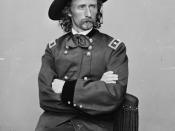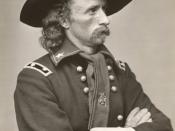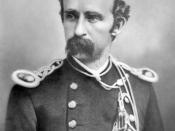The old west holds many secrets that we will never find a answer to. The Battle of Little Big Horn is one of those secrets. Sure we know that General George Armstrong Custer and his company were massacred there, but there has always been stories about survivors. This paper is going to compare the similarities and differences between the legendary George A. Custer and one of his men, Frank Finkel, who is believed to be one of the survivors of the great battle.
Before I researched Custer, I believed him to be a great man who was viciously ambushed by Indians for no apparent reason. During elementary school we are taught the fictional side of history, the history that made Americans great. We have to do our own research to sometimes find the true facts. This paper is going to be a little different because it is going to have some emphasis on how both men are not who they appeared to be.
George Armstrong Custer, affectionately known to close family members as "Autie," was born on December 5, 1839 in a small but, comfortable farmhouse in New Rumley, Harrison County, Ohio. "He acquired the nickname because of the way that his first attempts at pronouncing "Armstong" sounded" (Wert 41). He had three brothers and a sister, all the offspring of Emanuel and Maria Custer. He was a normal boy, athletic, average student.
He secured a nomination to attend West Point, the military academy, from "Representative John A. Bingham, and passed the entrance exams and became a member of the class of 1861" (Pappas 22). Custer's adjustment to life at the "Point" was not easy. His care free prankster lifestyle had to give way to the rigid discipline that the academy demanded. He did well at athletics and horsemanship, but...


